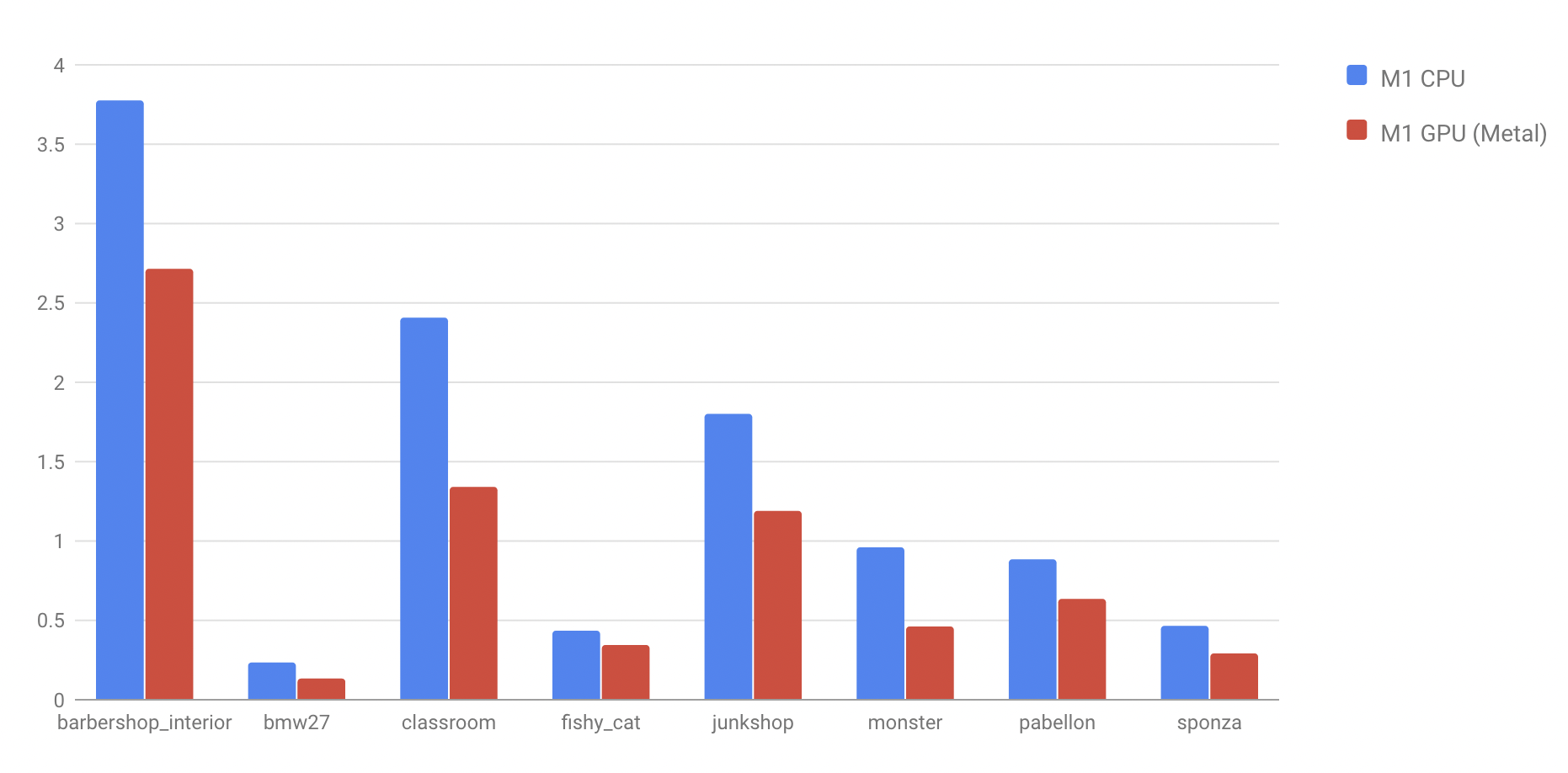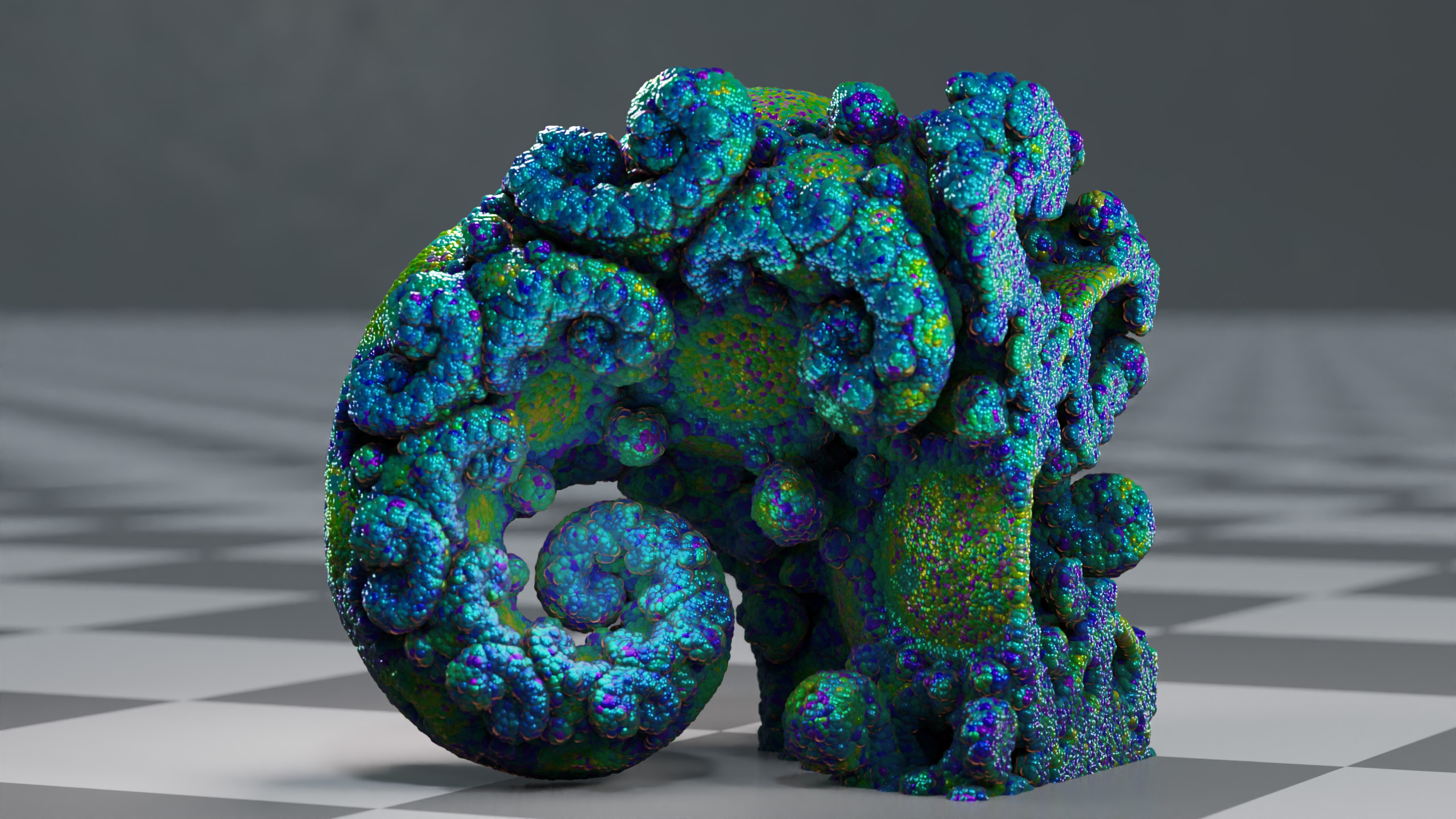Blender 3.1: Cycles¶
Apple Metal¶
Cycles now has a Metal GPU backend, contributed by Apple. Metal GPU rendering is currently supported on:
- Apple M1 computers running macOS 12.2 or newer
- Apple computers with AMD graphics card running macOS 12.3 or newer
The implementation is in an early state. Performance optimizations and support for Intel GPUs are under development.

Ray Tracing Precision¶
Many artifacts from rendering small, large and far away objects have been eliminated. There will always be object scales where numerical precision becomes a problem, but it's further out now.
There can still be artifacts with rendering overlapping geometry, in some cases more severe than before. Such overlapping geometry should be removed, or have a small distance added in between.
Point Clouds¶
Direct rendering of point cloud objects as spheres is now supported. This is much more efficient in memory usage and render time, compared to instancing an object on every point. (35b1e9f)
Point clouds can be generated with geometry nodes or imported from other software. Some example uses are sand, water splashes, particles or motion graphics.
The new Point Info shader node can be used to get the point center position and radius, as well as a random value for point.

Features¶
- Camera: new Fisheye Lens Polynomial model. This allows real world cameras to be modeled by specifying the coordinates of a 4th degree polynomial that relates a pixels distance (in mm) from the optical center on the sensor to the angle (in radians) of the world ray that is projected onto that pixel. This is available as part of the panoramic lens type, however it can also be used to model lens distortions in projective cameras for example. (24e0165)
- Baking: new "Adjacent Faces" method to generate margin, based on adjacent faces across UV seams. This significantly reduces discontinuities on UV seams. The old method is called "Extend", and extends border pixels outwards. (449db0a)
- The map range node can now work directly on vectors. (5b61737a8f)
- Make Embree compact BVH optional. Disabling this can improve CPU render time, at the cost of higher memory usage. (e2a36a6e45)
- Denoise operator in the Python API now supports OptiX temporal denoising. This requires enabling the Denoising Data and Vector passes. There is currently no user interface for this feature, only a Python API. (8393ccd076)
- Merge operator in the Python API now supports merging OpenEXR renders that used adaptive sampling. (dbd64a5)